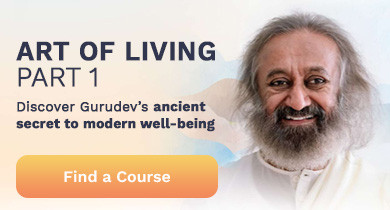
Did you know that 70 percent of the toxins in your body get expelled through your breath?
It's true! So it's no wonder that shallow breathing, also known as chest breathing, can lead to a laundry list of ailments that negatively impact your health and your overall quality of life.
If you want to avoid the pitfalls of shallow breathing, read on to learn some deep breathing techniques so you can be healthier and happier for years to come!
The pitfalls of chest breathing
If you feel like it's hard to take a deep breath, you may be suffering from a habitual breathing pattern called chest breathing. Chest breathing is the drawing of minimal breath into the lungs using the muscles in the upper chest and rib cage instead of the diaphragm.
When you breathe in this way less oxygen is introduced into your body, and since every cell and organ depends on oxygen, your entire system ends up suffering. Some of the conditions caused or worsened by chest breathing include:
- Anxiety Disorders
- Asthma
- Hyperventilation
- Hypoventilation
- Pneumonia
- Pulmonary Edema
- Chronic Obstructive Pulmonary Disease
- High blood pressure
But don't worry, deep breathing exercises such as abdominal breathing, pursed lip breathing, and alternate nostril breathing can reverse chest breathing and keep you breathing deeper for the long haul!
Deep breathing techniques for a better life
So you want to breathe deeper and get more oxygen into your system, but how to get started? A little work with breath focus and breath control is a great way to begin.
Here are four easy breathing exercises that you can practice to increase your lung capacity and reverse the effects of chest breathing.
1. Deep breathing: The profound effect of deep breaths
Peer-reviewed studies have shown that regular practice of deep breathing can increase lung capacity and oxygen levels in the body. In fact, you can feel the positive effects of deep breathing in just a few seconds.
Give it a try and see for yourself!
To perform this simple breathing technique:
- Sit upright in a comfortable position, and consciously relax your whole body.
- Inhale slowly for a count of four, filling up your lungs fully.
- Exhale slowly for a count of four to six, emptying the lungs completely.
2. Diaphragmatic breathing
Also called abdominal breathing or belly breathing, this breathing exercise involves consciously engaging the stomach muscles and diaphragm when breathing in order to take deeper breaths.
Here's the basic step-by-step process to practice diaphragmatic breathing. As a beginner, you may want to try this first in a lying-down position.
Sit or lie down straight on a comfortable, flat surface. If there is any strain in your back, keep your knees bent. Relax your body.
- Relax your shoulders, head, and neck by gently rolling them a couple of times.
- Put one hand on your upper chest and the other hand on your belly.
- Take a long, full, easy breath in through your nose and fill your lungs up completely.
- As the lungs get fully filled, the diaphragm moves down, expanding your abdomen and sides of the waist. Your chest remains relatively still. Your hand on your belly gently rises.
- Exhale slowly through pursed lips (as if your lips are holding a straw in your mouth) for the count of four or six. Feel the abdomen narrowing and gently getting pulled towards your spine. The hand that is resting on your belly will gently come back to its original position.
- Repeat these steps 10-15 times for the best results.
3. Pursed lip breathing
Pursed lip breathing, also known as straw breath, is a simple technique where you purse your lips and breath deeply as though you were breathing through a straw. It's a great way to slow down your breath, improve lung function, and relieve stress.
Check out the video below to learn how to practice properly.
4. Alternate nostril breathing
Alternate nostril breathing is easy to practice and leaves you feeling balanced and ready for dynamic activity or deep rest.
Learn how to practice by watching the video below!
If you want to breathe better and improve your overall physical health, just pick any of the above techniques and practice regularly. Before long your normal breathing patterns will deepen and more oxygen will be introduced into your system every day. You’ll feel more energized, enthusiastic, and healthy.
If you want to experience all these benefits AND a whole host of benefits beyond the physical realm, there is one technique shown by science to surpass them all.
Go beyond breathing exercises
SKY Breath Meditation is a simple 15-minute technique that has been shown by dozens of peer-reviewed studies to offer huge benefits to your physical, mental, and emotional health.
Some of the benefits include:
- Improved mental clarity and focus
- Deeper sleep
- Healthier blood pressure
- Enhanced immune system function
- Increased life satisfaction
- Reduced impulsivity and addictive behavior
- Increased self-esteem and optimism
I have been practicing SKY for 8 years daily, and it has flat out changed my life in ways I never could have imagined. I feel more healthy, centered, happy, and relaxed every day.
If you want to improve your lung health and dive into the best that breathwork has to offer, I suggest learning more about SKY Breath Meditation.
You can do this by attending a free breath and meditation online session. Just click on the image below to choose your day and time, and unlock the power of breath for yourself!




























